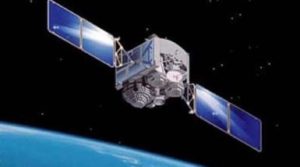
In Part One of this multi-week SpaceWatch Middle East Theme on the Chinese Space Silk Road and the Middle East, we invited Dr. Malcolm Davis of the Australian Strategic Policy Institute (ASPI) to provide an overview of the Space Silk Road for readers.
The emergence of China’s Belt and Road Initiative (formerly known as One Belt One Road) is a key aspect of Chinese grand strategy towards achieving President Xi Jinping’s “China Dream.” This China Dream speaks of the rejuvenation of China into a rich country with a strong army which has returned to what the Chinese perceive as their rightful place as a 21st Century Middle Kingdom – the leading power in Asia and a global power in every respect. This would establish new political, economic, and security orders across Asia as part of a Community of Common Destiny which includes its neighbours in Northeast and Southeast Asia, as well as South and Central Asia. This new regional architecture would then supplant the U.S.-led “hub and spokes” security arrangements and see China emerge as the central power to which all states would turn in political, economic, and security terms.
In the 21st century, China also seeks to ensure its dominance in space if it is to be truly successful in its global aims. To do so, it must add a “Space Silk Road” to the existing land-based Silk Road Economic Belt that runs through Central Asia and Russia into Europe, and the 21st Century Maritime Silk Road running through the South China Sea, the Indian Ocean, and through the Red Sea into the Mediterranean Sea. The Space Silk Road, of course, is not an actual road, but an increased focus on assuring that BRI states sign up to Chinese provision of space support for their rapidly growing economies.
Such Chinese space support could see states subscribing to use Beidou navigation and positioning satellites, as well as the establishment of Chinese ground stations to support terrestrial subscribers in BRI client states, and growth of Chinese satellite communications to support local economic growth and development in BRI clients. The goal would be to provide Chinese space support as a further aspect of Chinese soft power. In the 2016 Chinese White Paper on Space,[1] the Chinese government states:
With sustained efforts in building the Beidou global system, we plan to start providing basic services to countries along the Silk Road Economic Belt and 21st-Century Maritime Silk Road in 2018, form a network consisting of 35 satellites for global services by 2020, and provide all clients with more accurate and more reliable services through advancing the ground-based and satellite-based augmentation systems in an integrated way. (‘Space Infrastructure’, 2016)
The government goes on to specifically mention the concept of a Space Silk Road, stating the establishment of a “Belt and Road Initiative Space Information Corridor” which would include:
…earth observation, communications and broadcasting, navigation and positioning, and other types of satellite-related development; ground and application system construction; and application product development. (Key Areas for future cooperation, 2016)
The Beidou navigation system (BDS) lies at the centre of China’s Space Silk Road plans, with the rapid expansion of the system emerging as direct competition to the U.S. Global Positioning System (GPS), Europe’s Galileo, and even Russia’s GLONASS systems. China will establish its full Beidou constellation by 2020 and enhance the accuracy of these satellites by ground based augmentation stations. Alongside the technical capability of Beidou is the political and diplomatic leverage it offers China. China is promoting Beidou through Chinese-led entities, such as the Brazil, Russia, India, China, and South Africa (BRICS) organisation and the Asia-Pacific Space Cooperation Organisation (APSCO), as the answer to the precision navigation and timing needs for rapidly growing states that sign up to the BRI. The Chinese government states in its 2016 Space White Paper:
In line with the Belt and Road Initiative, China will jointly build satellite navigation augmentation systems with relevant nations, provide highly accurate satellite navigation, positioning and timing services, improve the overseas BDS service performances, and promote international applications of navigation technologies.” (International Cooperation and Exchanges, 2016)
The “China Real Time Report” in The Wall Street Journal refers to Beidou as the “digital glue” for the roads, railways, ports, and industrial parks that China builds on the surface of the planet to extend its presence and influence.[2] Add to this the importance of Chinese-provided earth observation satellites for civilian and defence applications and communications satellites for rapid connectivity, but it is Beidou that is at the heart of China’s Space Silk Road plans.
So how should regional states respond to this challenge?
The first step is to ensure that China is not the only player in this game. In considering the emerging space sector in Asia, India is promoting its own space capabilities to support the development of South Asian Association for Regional Cooperation (SAARC) states growth.[3] Most recently it demonstrated the ability to place 104 CubeSats into orbit on a single launch, a feat that demonstrates the possibility of developing states taking advantage of low-cost Space 2.0 technologies to develop and launch their own space capabilities rather than being dependent on externally provided space support.[4] Japan also looks set to allow greater focus on developing its commercial space industry, rather than continuing the Japanese Aerospace Exploration Agency (JAXA) as the sole provider of space launch services.[5]
The growth of competition is important because it offers greater choice to prospective clients who may sign up to the BRI while still wanting greater independence in their access to space support, rather than defaulting to China as the sole provider of such support. In this regard, encouraging the growth of the commercial launch sector, while simultaneously developing the potential of lower-cost Space 2.0 technologies such as CubeSats, opens up the best path to counter Chinese dominance of a vast swath of the global space-based positioning, navigation, and timing (PNT) and satellite communications market.

Dr. Malcolm Davis joined ASPI as a Senior Analyst in Defence Strategy and Capability in January 2016. Prior to this he was a Post-Doctoral Research Fellow in China-Western Relations with the Faculty of Society and Design at Bond University from March 2012 to January 2016, and he currently retains an Honorary Assistant Professor position in the Faculty. He has worked with the Department of Defence, both in Navy Headquarters in the Strategy and Force Structure area, and with Strategic Policy Division in the Strategic Policy Guidance and Strategic External Relations and Education sections fromNovember 2007 to March 2012. Prior to this appointment he was a Lecturer in Defence Studies with Kings College London at the Joint Services Command and Staff College, in Shrivenham, UK, from June 2000 to October 2007. He holds a PhD in Strategic Studies from the University of Hull as well as two Masters degrees in Strategic Studies, including from the Australian National University’s Strategic and Defence Studies Centre. His main research focus is on defence strategy and capability development, military technology, and the future of warfare.
Notes:
[1] The State Council of the People’s Republic of China, ‘Full Text of white paper on China’s space activities in 2016’, at http://english.gov.cn/archive/white_paper/2016/12/28/content_281475527159496.htm
[2] Trefor Moss, ‘China’s One Belt One Road Takes to Space’, in The Wall Street Journal, December 28th, 2016, at https://blogs.wsj.com/chinarealtime/2016/12/28/chinas-one-belt-one-road-takes-to-space/
[3] Namrata Goswami, ‘China and India’s Diplomatic Space Race’, The Diplomat, May 12th, 2017, at http://thediplomat.com/2017/05/china-and-indias-diplomatic-space-race/
[4] Department of Space, ISRO, ‘ PSLV-C37 Successfully Launches 104 Satellites in a Single Flight’, February 15th, 2017, at http://www.isro.gov.in/update/15-feb-2017/pslv-c37-successfully-launches-104-satellites-single-flight
[5] Shinichiro Unozawa, Ryosuke Hanafusa, ‘Japan’s Space Industry gets some new life’, Nikkei Asian Review, Jan. 21st 2017, at http://asia.nikkei.com/Business/Trends/Japan-s-space-industry-gets-some-new-life
Original published at: https://spacewatch.global/2017/08/swmethemes-chinas-space-silk-road-middle-east-chinese-space-silk-road/
 SpaceWatch.Global An independent perspective on space
SpaceWatch.Global An independent perspective on space

